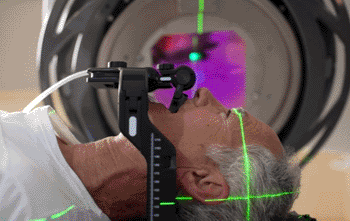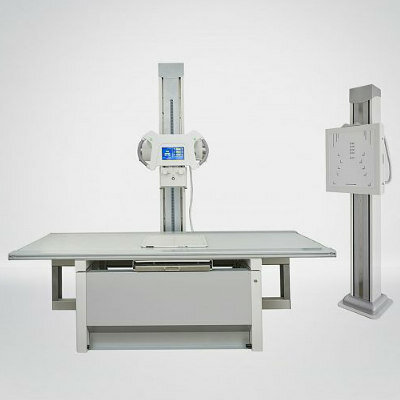Beam-Shaping Tech Increases Safety, Reduces Treatment Times for Cancer Patients
By MedImaging International staff writers
Posted on 11 Feb 2013
With radiation oncology treatments, the objective is to hit the tumor with as much ionizing X-ray energy as possible, while sparing adjacent, healthy tissue. A California cancer center has taken a major move toward that goal as one of the first sites in North America has installed a sophisticated new multileaf collimator (MLC) system on its medical linear accelerators. Posted on 11 Feb 2013
The MLC system accurately focuses high-energy, megavoltage X-ray beams that increase doses to tumors and minimize doses nearby. The 160-leaf collimator also allows radiation oncologists to customize the therapeutic beams to conform to a tumor’s shape and size. For patients, the highly conformal treatments mean fewer side effects and less time on the treatment table.

Image: The Agility multileaf collimator (MLC), a beam-shaping device integrated into the head of a linear accelerator (linac) for treating cancer (Photo courtesy of Elekta).
With its increased leaf speed and effectiveness and monitoring of leaf position, the new system will be used to treat a wide variety of diseases, including prostate, breast and lung cancers, as well as for highly specialized treatments such as stereotactic body radiosurgery. “This system is safe, reliable, accurate, and fast,” said Stanley Benedict, chief of clinical physics in the University of California (UC), Davis (USA) department of radiation oncology. “It’s great technology for our patients.”
The collimator is the latest part of an arsenal in the US National Cancer Institute (NCI)-designated cancer center’s treatment options. The system complements other sophisticated radiation oncology technologies already established at UC Davis, such as Gamma Knife radiosurgery, image-guided radiotherapy and high-dose-rate brachytherapy, which pinpoint tumors and avoid healthy tissue.
Multileaf collimators perform similar to high-tech lenses, focusing radiation beams and conforming to the shape of an individual’s unique tumor. With its 160 tungsten leaves and larger field size (40 x 40 cm), the new device can precisely target tumors both large and tiny. This versatility is particularly helpful when treating head and neck, and other complicated tumors surrounded by normal tissue. The new device is precise to within 0.01 mm, allowing oncologists to conform treatments to tumors with the utmost precision.
In addition to the MLC, a new software package exactly controls the leaves to ensure that the beam aligns tightly to the target. The software also can move individual leaves as quickly as 6 cm per second. The collimator’s high speed is suitable for radiation dose control and for arc-based treatments, in which a linear accelerator gantry rotates around the patient while simultaneously conforming to the tumor from different angles and continuously shaping the radiation beam. “This is a very safe system,” said Dr. Richard Valicenti, chair of the department of radiation oncology. “And because it’s so fast, we can reduce individual treatment times from between 25% and 50%.”
The system also can “interdigitate,” a process that helps radiation oncologists target multiple, tiny areas with different doses. “It’s the equivalent of painting by numbers,” said Dr. Benedict. “We can paint in certain doses to specific parts of the body.”
It will also be suitable to perform stereotactic body radiotherapy, which delivers higher doses in fewer treatments. “Stereotactic treatments tend to be longer because they’re larger fraction sizes,” said Dr. Valicenti. “Now we can do these treatments with shorter durations. The technology might also allow for fewer treatments.”
The collimator, called Agility, and controlling system, called Integrity, was manufactured by Elekta (Stockholm, Sweden), a global company that develops tools, treatment planning systems and software programs for radiation therapy, radiosurgery, and brachytherapy.
Related Links:
University of California, Davis
Elekta














